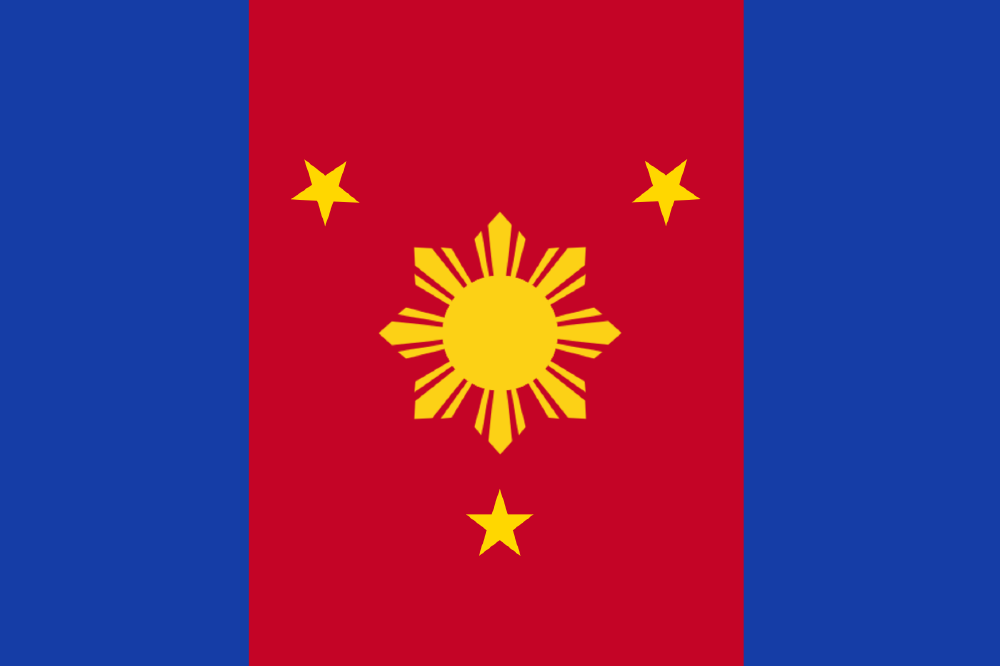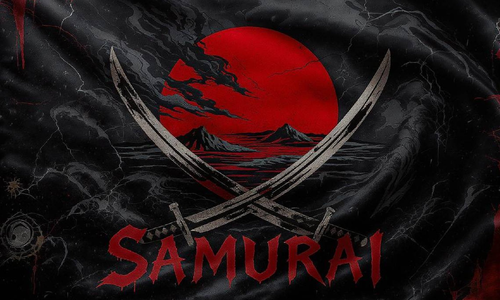| National Factbook |
| Flag: |

|
| Nation Name: |
Islaraya |
| Leader Name: |
Hans Mozol |
| Currency: |

Philippine Peso |
| National Animal: |

Dog |
| History: |
The Republic of Islaraya is a small but resilient nation located in the heart of what was once known as the Republic of the Philippines. Its landmass covers the area formerly designated as the National Capital Region, now rebuilt and reborn as the sovereign Islarayan state. The nation stands not as a successor by force, but as a legacy rebuilder—an echo of a fallen republic that once stood tall in Southeast Asia.
The collapse began in 2040, when the world was plunged into a devastating conflict now known as World War IV. Caught between global powers and crippled by internal strife, the Philippines was bombed, blockaded, and destabilized beyond recovery. In the aftermath, much of the nation became ungovernable. Civilian life disintegrated, infrastructure collapsed, and communication with the outside world ceased. By 2045, the Philippine state had effectively ceased to exist.
Yet within the ruins of the capital, life persisted. Underground shelters, emergency bunkers, and refugee colonies gradually formed across the remnants of Metro Manila. Former soldiers, civil engineers, teachers, and medics—those who survived the fall—worked tirelessly to preserve what little remained. They repurposed abandoned infrastructure, purified contaminated water sources, and reestablished localized governance. Over the decades, these enclaves evolved into unified zones of order amid the chaos, forming the foundation of what would later become Islaraya.
In the decades that followed, contact with the broader world remained limited, and attempts at reunifying the archipelago were deemed impossible. The survivors recognized that the heart of the old republic—its capital—needed a new identity, one rooted in self-determination and resilience.
On October 6, 2114, the Republic of Islaraya was officially founded.
The name “Islaraya” comes from the words “Isla” (island) and “Raya” (a derivative of malaya, meaning free). It represents both isolation and independence, a symbol of survival forged through fire. Built atop the foundations of old cities like Manila, Quezon, Pasig, and Taguig, Islaraya embraced its compact geography, uniting its citizens under a shared goal: to preserve culture, restore order, and build a future from the wreckage of the past.
Today, Islaraya remains a nation defined not by size or global influence, but by the unwavering will of its people. It carries forward the legacy of its predecessor—not through conquest or nostalgia, but through endurance, rebuilding, and the belief that even in ruin, a nation’s heart can beat again.
|
| Geography |
| Continent: |
Asia |
| Land Area: |
3,218.68 sq. km |
| Terrain: |
The Republic of Islaraya is an urban archipelago of recovery, with its territory primarily composed of the former cities of Metro Manila. Decades of war and neglect left much of the old terrain scarred, but the natural features endure. The land is a mix of low-lying coastal plains, river systems such as the restored Pasig and Marikina Rivers, and reclaimed ruins of old concrete sprawl overtaken by vegetation. Urban jungles now blend with true flora—collapsed buildings taken over by vines, rooftops turned into gardens, and narrow streets reshaped into canals due to rising sea levels. Elevated zones like Quezon City's gentle hills provide natural vantage points and defensive positions. Despite its small area, the terrain of Islaraya is layered, tactical, and deeply interwoven with its past. |
| Highest Peak: |
Mt. Kamuning,
80 meters
|
| Lowest Valley: |
Bagong Ilog Basin,
0 meters
|
| Climate: |
Islaraya experiences a tropical monsoon climate, characterized by two distinct seasons: a hot, dry season from December to May and a heavy rainy season from June to November. The region is humid year-round, with temperatures ranging from 24°C to 35°C (75°F to 95°F). While climate change has made rainfall more intense and unpredictable—often resulting in seasonal flooding—the Islarayan government has adapted through elevated housing, reinforced levees, and improved drainage infrastructure. The nation frequently endures typhoons, especially during the wet season, but early warning systems and resilient civil engineering keep damage to a minimum. The climate, though harsh, has become part of the nation's identity: unforgiving, but survivable through vigilance and cooperation. |
| People & Society |
| Population: |
354,227 people |
| Demonym: |
Filipino |
| Demonym Plural: |
Filipinos |
| Ethnic Groups: |
Lowland Christianized ethnolinguistic gr - 86.0%
Indigenous Peoples - 9.1%
Moro / Muslim minority - 6.5% |
| Languages: |
Filipino - 46.8%
35 - 35.0%
Cebuano - 13.5% |
| Religions: |
Roman Catholic - 78.8%
Protestant/non‑Catholic Christian - 7.0%
Islam/Muslim - 6.4% |
| Health |
| Life Expectancy: |
72 years |
| Obesity: |
20% |
| Alcohol Users: |
80% |
| Tobacco Users: |
19.5% |
| Cannabis Users: |
7.9% |
| Hard Drug Users: |
14% |
| Economy |
| Description: |
The Republic of Islaraya operates under a mixed capitalist-socialist economy shaped by decades of post-war reconstruction. Founded in 2114, nearly 70 years after the collapse of the former Republic of the Philippines during World War IV (2040–2045), Islaraya emerged with a strong commitment to both individual enterprise and collective stability.
Private business is encouraged, especially in technology, logistics, tourism, and resource processing. There are no restrictions on campaign finance or political spending, allowing full capital expression in politics and media. However, the government mandates labor unions for large businesses to ensure worker protections. Deficit spending is constitutionally permitted to fuel key public services like universal healthcare, public housing, and welfare for those in poverty.
A flat income tax is levied equally across all citizens, replacing complex tiered tax systems. Free secondary education is provided only to the nation’s brightest students, fostering merit-based development while maintaining fiscal control.
Cannabis is permitted strictly for medical purposes with government approval. In contrast, recreational use of hard drugs is not prohibited, reflecting a libertarian stance on adult drug freedom. Alcohol is fully legal for adults, but assisted suicide remains illegal, as does infant circumcision, with adult choice permitted at legal age.
The government strongly supports alternative energy, making solar, wind, and hydro the backbone of its infrastructure, alongside pollution control mandates. Despite its small size, Islaraya has grown into a resilient, self-sufficient economy powered by clean energy, regional trade, and high-tech innovation.
Despite its small geographic size, Islaraya maintains an active domestic market, fueled by a resilient, service-oriented population. Local governments, worker cooperatives, and private startups coexist, often working in tandem through public-private partnerships. The national currency, the Islarayan Credit Peso (ICP), is digitally regulated by the Central Economic Bureau, and has gained regional stability due to its integration with maritime and tech-based trading hubs.
Barter and local exchange systems remain active in rural districts and among marginalized communities, ensuring inclusivity. Foreign aid is minimal, so the economy thrives primarily on internal resourcefulness, efficient maritime trade, renewable energy initiatives, and tight anti-corruption policies that maximize resource utilization. While inequality still exists, Islaraya’s economic system aims to be self-sustaining, socially equitable, and future-proof. |
| Average Yearly Income: |
$52.35 |
| Gross Domestic Product (GDP): |
$194,610,005.00 |
| GDP per Capita: |
$549.39 |
| Gross National Income (GNI): |
$21,347,025.00 |
| Industries: |
Islaraya’s industrial base reflects both its post-apocalyptic origin and its modern pragmatism. Centered in the ruins of old Metro Manila, major industries include:
Tourism: The rebuilt skyline, wartime ruins, and religious shrines draw visitors from allied post-war nations. Metro-Isla remains one of the few cities rebuilt on original 21st-century ruins.
Coconut Products: Coconut milk, oil, fiber, and by-products are among Islaraya's top exports. The Islarayan Coconut Board controls production to ensure sustainability and pricing fairness.
Piracy and Salvage: Once born from desperation, piracy has evolved into legalized privateering under strict naval oversight. Islarayan “license-salvagers” retrieve derelict cargo, downed satellites, and wrecks from disputed zones.
Logging and Bamboo Harvesting: A tightly regulated industry vital to domestic housing and construction. Logging licenses are given only to firms complying with strict reforestation ratios.
Alternative Energy Production: With fossil fuels long abandoned, Islaraya’s power grid is fully reliant on solar, wind, and oceanic current systems. Green-tech manufacturing is a fast-growing sector.
Defense Manufacturing: Civilian exo-suits, light drones, and small arms are produced domestically for both public security and personal defense (military-grade weapons are banned for civilians).
Technology Refurbishing and Salvage Engineering: Old-world tech and war debris are upcycled into usable infrastructure, keeping costs low and innovation high.
With immigration strictly prohibited, industrial labor and innovation depend entirely on internal population development and mandatory national service programs. |
| Military |
| History: |
The Armed Forces of the Republic of Islaraya (AFRI) were founded on October 6, 2114, the same day the nation declared independence in the ashes of the former Philippine capital region. Following World War IV (2040–2045)—a cataclysm that fractured most of Southeast Asia—local survivors, defected soldiers, and resistance factions maintained underground control of Metro Manila for nearly seven decades.
Upon formal independence, AFRI was established as a citizen-based defense force, deeply tied to national identity. Under Islarayan law, mandatory military service begins at adulthood (age 18), with all citizens serving a minimum of 2 years. Military readiness is viewed not just as defense—but as a cultural pillar of self-governance and national survival.
AFRI is divided into five branches:
Islarayan Ground Command (IGC)
The IGC serves as the primary defense and offense unit during ground invasions and urban warfare. Equipped with exo-suits, riot countermeasures, and modular mobile artillery, they dominate close-quarters and fortified zone battles. IGC forces use underground rail grids and retrofit war bunkers for stealth deployments and sustained sieges.
Islarayan Naval Command (INC)
The INC commands Islaraya’s maritime combat and logistics fleet, safeguarding shipping corridors and staging amphibious landings. With hydrofoil gunships, submersible drone carriers, and privateer contract fleets, they enforce economic control zones and repel enemy blockades and pirate factions during wartime.
Islarayan Aerial Division (IAD)
The IAD controls air superiority, precision strikes, and logistical airlift operations. Their fleet includes VTOL fighters, heavy bombers, and solar surveillance drones. Designed for both frontline support and homeland airspace defense, IAD wings dominate both urban air combat and high-altitude surveillance.
Islarayan Orbital Command (IOC)
The IOC manages the Republic’s satellite defense grid, orbital surveillance, and ballistic threat interception. They operate ground-to-space missile shields, low-orbit drone satellites, and maintain orbital debris-clearing operations. During wartime, they provide communication blackout capabilities, early launch detection, and space-based recon.
Islarayan Strategic Recon Authority (ISRA)
The ISRA is AFRI’s covert intelligence division, specializing in counterintelligence, infiltration, cyberwarfare, and covert strikes. Agents are trained for operations behind enemy lines, dismantling hostile command networks, and executing decapitation missions. ISRA also monitors domestic sentiment and digital threats to national integrity.
AFRI follows a doctrine of defense over expansion, technology over scale, and discipline over aggression. Capital punishment is banned for most crimes, but heinous offenses (such as treason or mass atrocity) can still lead to the death penalty, typically after military tribunal.
In peacetime, AFRI also assists in disaster response, energy maintenance, and resource distribution. Each citizen, after completing their term, enters the Civilian Reserve Corps, able to be reactivated in times of crisis. |
| Soldiers: |
37,572 |
| Tanks: |
1,616 |
| Aircraft: |
75 |
| Ships: |
13 |
| Missiles: |
0 |
| Nuclear Weapons: |
0 |
| Last Updated: 08/04/2025 05:53 am |



















